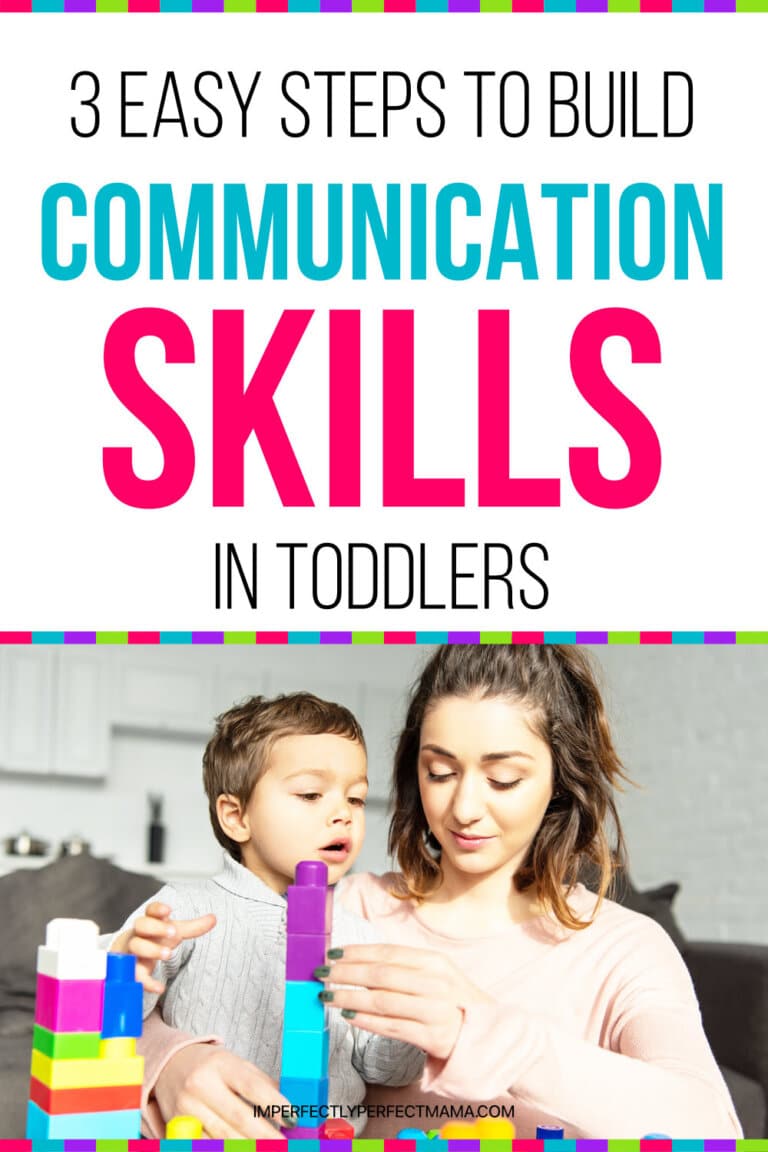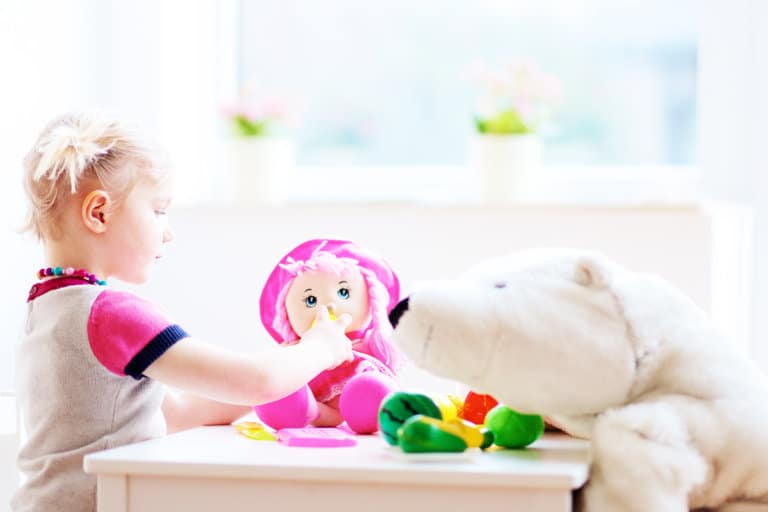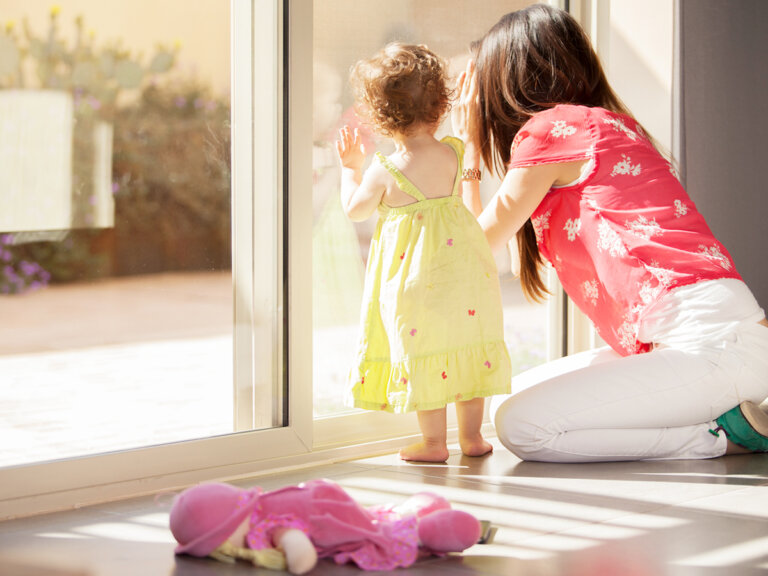One question that gets asked a lot to new moms with toddlers is, “Are they talking yet?”

I especially get this, as I am a mother of twins to an opinionated girl and exuberant boy. When my twins were 2 years old, they had a lot to say, but people just couldn’t understand them.
My daughter would often say “bye” and “baby,” and my son babbled a lot of meaningful sounds like “wah-wah” for the wagon or “bu” for the ball.
Learning to talk is a huge task and many children vary on when they begin to talk.
Some children focus their learning on motor skills like climbing and jumping and have no time to use words.
Other children start saying words at around a year old but may not even be walking yet. If you have older children, this may also interfere with your younger child’s ability to communicate if their older sibling anticipates their needs and talks for them.
This did happen to me when I couldn’t understand what my son was saying and my daughter would interpret it for me.
Usually, though, by two years of age, most children are speaking in 2-3 word sentences and no formal intervention was needed.
For twins, it is more common to see a delay in talking and often parents notice something called twin talk, in which twins will adopt a set of unique sounds to communicate with each other and with others.
My fraternal twins used twin talk all the time.
Although they didn’t talk directly with each other, they would mimic each other’s sounds regularly. At that time I started getting concerned, as my son and daughter didn’t have many, if any, single words at 21 months old.
Before I had my twins, I was an Applied Behavior Analysis (ABA) therapist for children with autism during my college years and a Special Education Assistant (SEA) for many years after college.
I helped many children of special needs to communicate their needs, play with a variety of toys and games, learn self-help skills like dressing or eating and practiced school readiness skills.
Having my background in learning theory and special education, I looked over my recourses and learned about natural and effective ways in getting children to talk.
These methods work wonderfully for young inquisitive toddlers who are late-talkers.
If you have a young toddler who is only babbling or saying very little words, try using these building steps to help with better communication.
O.W.L (Observe, Wait and Listen)

As stay at home moms to toddlers, time is precious.
Over the years I’ve learned a few things about being quick and efficient when it came to diapering, cleaning up or folding laundry.
Rushing around, crossing off items on your to-do list, and thinking about the next job, are all part of a typical day for a stay at home mom. This, however, doesn’t help children with language.
What does help, though, is to be mindful in your daily activities and using OWL helps with this.
By being mindful, you are conscious of every action you are doing, therefore deliberately slowing down your pace when you’re with your child. When you do this you will find greater joy and purpose in your day-to-day life.
Try to take some time daily to practice mindfulness and you’ll notice improvement in your overall health and well-being.
This strategy is taken from the Hanen Approach, an early language intervention centered on providing parents the tools to use at home with their children.
Not only parents, but early childhood educators and Speech Language Pathologists (SLP) employ these naturalistic and social strategies for children with special needs. These tips are highly useful for all children, however, and parents can easily use them for their child.
How does OWL work?
Observe
Watch your child and see what interests them. Maybe you notice your son bending down to look at his new socks or you see your daughter looking in the mirror giving funny faces.
These, and many more, are all opportunities to create conversations.
By observing their eye contact and body language you can get an idea of what they may be thinking or wanting.
Since my daughter is the more quiet of the two, I noticed that if I didn’t bombard her with questions (What are you holding? What color is that? Where’s the baby doll?) I could let her organically find what she wanted to play with instead of me directing her attention elsewhere.
How can you create moments of observation in a busy day?
- Pick one activity, sit back and observe your child. They will come to you instead of you coming to them. I usually picked art time to practice these tips. This was a good time for me as it was easy to set up and it was an activity that can be open-ended, which meant it had no ending or no rules.
- While you are doing a chore, for example, folding laundry, take it to the playroom and quietly fold while you observe. I often brought towels and wash clothes to the playroom and both my children loved to help me fold laundry. They watched me and I watched them and I found it was an opportunity to invite conversation.
- Go outside for a walk and instead of testing your child on what they know, let them direct the conversation. I often found going outside to be the best opportunity to practice OWL. That was the time for my children to explore their environment without needing me to explain everything. Textures, smells, and sight are enough to let your child lead and communicate.
Wait
While you are observing, wait and see what your child wants to communicate. To carry out this you simply stop talking, look at your child and lean towards them to show that you are listening.
Sometimes this means you and your child will be sitting in the playroom not saying anything. Usually, when this happens, I would want to fill the void by commenting, asking questions or just labeling items in the room. When you start narrating their play or asking questions, you haven’t given your child a chance to make the first communicative message.
Next time you are with your child, try to refrain from doing any talking and see what your child does.
Here are some considerations while you practice to wait:
- It may take time for your child to communicate first, so don’t rush it or try to make it happen.
- If your child switches activities, follow him or her, but don’t say anything. Give him or her time to make that first interaction.
- It doesn’t matter what the first interaction is – a gesture, a sound, or a word, as long as you acknowledge it.
- If you find that your child is longingly staring at a particular book or toy, then you can hold up two items, one of them being what you think they want, and see what communication happens with your child.
Listen

Once your child makes the first interaction, listen to it and communicate it back to him or her. This lets your child know that you are actively listening, paying close attention and trying to interpret what they are saying.
In the beginning, children will babble or say a variety of sounds.
It’s our job to interpret these sounds into words and give your child those labels. You may find that you are unable to understand what they are trying to say. That is okay. Repeat their sound or gesture and try a few words that you think they are saying.
Once they are using words more consistently, work on expanding their language by providing two or three word labels.
For example, saying red ball or baby red ball are ways to teach your child attributes and expand their language skills.
These tips can also be used for younger children to elicit communication. It is a natural approach that should come easy for many parents. Children also love when their mom or dad gets down at their level and plays with them. The important thing to remember is to give your child undivided attention every day.
Let The Fun Begin
These three easy steps can be done anytime or anywhere. All you need is:
- Your child – Gather a few toys for them to play with or venture outside for a fun filled walk. Let your child lead the activity and watch them explore their surroundings. Giving children a bit of freedom to run around, pick up things and throw them will create learning opportunities from their environment, which creates opportunities for talking.
- Your presence – practicing mindfulness can be difficult if all you ever think about is what’s for dinner, is it going to rain tomorrow, or I need to drop off my library books before I go to the grocery store. If it’s easier, set out a particular time like snack time or at 10 a.m. every morning to practice mindfulness. If you schedule it in, it will eventually become innate and over time, you will be more conscious of your present moment.
Remember, when doing OWL, to observe your child’s body language, gestures and facial expressions.
Also, wait to see what your child wants. Finally, listen to what your child is trying to communicate and let them know you heard them by labeling it back.
I did this with my twins for when they weren’t communicating that well and eventually my daughter’s language expanded. My son communicated more effectively by using gestures and similar sounds for the things he wanted.
One big improvement was that both of them were babbling more and trying out new words.
Looking back at this crucial time (my twins are 8 years old now) I’m happy that I took the time to learn these strategies and invest in my twins! While my son still uses speech therapy to this day, I’m happy that both are growing and wanting to improve their communication skills!
Next time you are with your child give OWL a try!





Leave a Reply